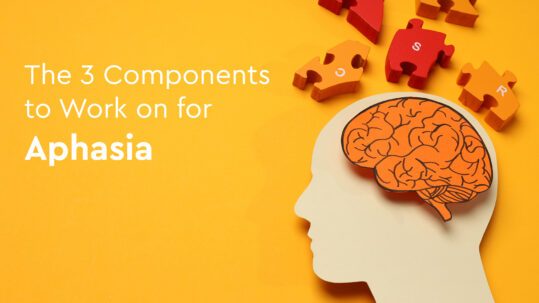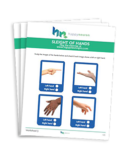Self-Regulation for Practitioners
Acknowledging the needs of your own nervous system is critical to clinical care. You can’t rescue someone from a burning building if you’re on fire yourself. At work, it’s unfortunately too common to feel “on fire” — juggling heavy caseloads, battling insurance denials, navigating office politics, managing big personalities, and the list goes on. So, how do we ease the burn, to prevent burnout? Let’s examine how self-regulation for practitioners is crucial for health and for delivering effective care.

What is Self Regulation?
Self-regulation refers to the ability to manage one’s thoughts, feelings, and behaviors.
If you’re a practitioner, you likely teach clients to work on self-regulation and help them manage their thoughts, feelings, and behaviors. This skill is critical for pretty much everyone. It helps us manage our relationships, friendships, family dynamics, and work life. It allows us to self-reflect and empathize with others, allowing for a level of emotional stability even in turbulent times.
Working in cognitive science, we may encounter a wide variety of clients with diagnoses that may impact their ability to regulate, such as a stroke, brain injury, bipolar disorder, and much more. These clients also go through a whirlwind of experiences, including grief, trauma, and intense loneliness. How many of these client stories do you see in a day– 8, 12, 20? That is a lot to take on for any individual. So while you teach clients about self-regulation, it’s critical that you practice it as well.
Why does it matter?
We talk a lot about regulation in client care—supporting executive function, calming heightened states, building interoceptive awareness. But rarely do we stop to ask: How’s my own nervous system doing today?
Your internal state directly influences your clinical decision-making, your tone, your facial expressions, and your capacity to attune.
In the world of cognitive therapy, providers such as psychologists, occupational therapists (OTs), and speech-language pathologists (SLPs) help clients with gaining and growing a wide variety of skills. So, how can practitioners regulate ourselves, and actively practice this ability while we also teach others these skills?
The Practitioner Pressure Cooker:
Here’s what many of us deal with on a daily basis:
- 10+ clients in a day, each with complex needs
- Sudden schedule changes, no-show stress, overbooking
- Denials from insurance companies
- Colleagues who are checked out, micromanaging, or overwhelmed themselves
- Performance metrics that ignore emotional labor (Talk about high productivity!)
- The expectation to be endlessly empathetic
It’s no wonder that so many clinicians report symptoms of compassion fatigue, secondary trauma, and chronic exhaustion.
Check-In: How Regulated Are You Right Now?
We may not even realize when we’re dysregulated, especially if we are all the time. Take 10 seconds to ask yourself these questions:
- Is your jaw tight?
- Are your shoulders up by your ears?
- Is your breath shallow?
- Are you clenching your toes or teeth?
- Did your mind skip ahead to your task list?
- Did you take your lunch today?
- When was the last time you had water?
- Have you been outside or looked out a window within the last few hours?
Awareness is the first step. You can’t regulate what you don’t recognize.
Self-Regulation Tools for Practitioners
Here are some strategies to try through a rough work moment:
The “Between-Clients” Reset
- Three deep breaths while rolling your shoulders back
- Visualize exhaling the previous session before stepping into the next
- Quick neck (or any body part) stretch
Stuck in “Fight-or-Flight”
- Drop your tongue from the roof of your mouth, relax your jaw
- Ground your feet: feel the heel-to-toe contact. Feel where you are right now.
- Try the 5-4-3-2-1 sensory grounding technique (5 things you can see, 4 things you can touch, 3 things you can hear, 2 things you can smell, and 1 thing you can taste)
- Look out a window for 60 seconds
- Sip water and focus on the sensation
- Write down one thing you’re proud of from the day so far

More strategies
It’s okay to have a tough day, week, or year. By working on strategies to self-regulate, you may be able to release some stress, calm your mind, and become more regulated. Here are a few strategies that may help:
- Set up your work environment for YOU– how can you adapt your desk or room to meet your needs?
- Take your lunch (no documentation). Eat in your car or outside if you need a break from others – it’s ok to be alone!
- Stick to a daily routine to help control what you can.
- Go outside! Go for a walk, or sit on a bench.
- Blast your favorite music or podcasts on the way to work or on your way home
- Complete a workout.
- Dim the lights during documentation or session planning.
- Use essential oils or candles for aromatherapy.
- Place sticky notes on your computer or desk with something that makes you smile (a phrase, something to look forward to, accomplishments, etc.)
Advocating for Regulation in the Workplace
Self-regulation shouldn’t fall solely on you. We advocate for our clients daily, let’s advocate for ourselves too. This could include:
- Protected documentation or break time
- Peer check-ins or reflective supervision
- Modified caseloads during emotionally heavy periods
- Access to training on clinician wellness and burnout prevention
Pairing up with coworkers may also help the advocacy push. Providing metrics and research on the benefits of practitioner mental wellness and positive impact on the quality of care, are also great options when advocating for change in the workplace. We all have a voice, let’s use it.
You’re Not Alone
Being a healthcare practitioner can be emotionally and neurologically taxing. And while our clients deserve the best of us, so do we!
Practicing self-regulation as a healthcare provider is about clinical integrity, sustainability, and remembering that your nervous system deserves protection, too.









